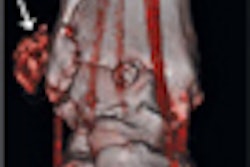Despite a few distractions, the U.S. Food and Drug Administration's (FDA) hearings this week on medical radiation dose occurred in a constructive environment and represent the agency's serious intentions to resolve the dose dilemma, according to participants at the hearings.
The FDA convened the hearings for March 30-31 to address the agency's growing concerns over medical radiation dose. Recent studies indicate that the U.S. population's exposure to medical radiation has risen steadily over the past several decades, and in the past year the medical field has also witnessed a series of high-profile errors involving both diagnostic and therapeutic uses of radiation.
At the hearings, FDA officials heard a wide array of testimony representing speakers from organized radiology, imaging device vendors, individual radiologists, and government agencies. Also testifying was a former FDA staffer who claimed that the agency brushed aside his concerns over the radiation dose that would be delivered by a virtual colonoscopy product whose 510(k) application he was reviewing.
The former staffer, a gastroenterologist, said that he advocated that the product carry a warning label if used for screening purposes due to the cancers it would "undoubtedly" cause, according to coverage of the testimony in the lay press. He said he was subject to retaliation for his position and that his employment contract was not renewed when it expired.
Another witness was a speaker who claimed he formerly worked at a nuclear facility and said he received more radiation from a single CT scan than in a 30-year career in the industry.
Constructive testimony
Despite these comments, 90% of the testimony at the hearings was constructive, according to Stephen Balter, Ph.D., of Columbia University Medical Center in New York City. Balter testified on both days of the hearings, representing both the National Council on Radiation Protection and Measurements (NCRP) and the Society of Interventional Radiology (SIR).
"I think the basic attitude at this meeting is that people are trying to cooperate and trying to improve the patient's situation, and discuss what can be done to manage patient dose," Balter said.
The first day of the hearings focused on equipment features that vendors could incorporate into their products to reduce radiation dose, with CT the topic of the morning's sessions and fluoroscopy discussed in the afternoon.
On the second day, testimony addressed what manufacturers can do to improve the training of personnel who use imaging equipment, as well as possible improvements in the quality assurance process at facilities using CT and fluoroscopy.
Balter felt that device manufacturers presented a persuasive argument that they are taking the issue of medical radiation dose seriously. They made a number of proposals on improving dose reporting for users of imaging scanners, and for making sure that any improvements are not just available for new scanners but also for systems installed in the field.
"You have industry being proactive in response to the user community," Balter said. "The government is listening, but I think they like what they hear."
Research needed
In her testimony, Dr. Carolyn Meltzer advocated that research to improve imaging and bioengineering technologies was a critical component to improve quality, safety, and efficiency, and she recommended new federal funding to support much-needed initiatives. Speaking as chair of the academic council of the Academy of Radiology Research and its Coalition for Imaging and Bioengineering Research (CIBR), Meltzer emphasized the need to carefully research and validate lower-dose strategies.
Meltzer recommended establishing standardized methods to translate machine-based exposure parameters into accurate estimates of patient exposure; developing and testing postprocessing methods, such as iterative reconstruction, to create high-fidelity images at lower radiation doses; and developing and testing methods to provide fail-safe procedures.
Meltzer also recommended federal support to demonstrate the use of best-practice data, protocols, and procedures in all clinical settings and throughout the medical device industry. She emphasized that inclusion of radiation dose exposure information should be an essential component of every patient's electronic medical record.
Behavior modification
To some extent, the FDA is in a difficult position, because much of the solution to the dose dilemma can only be solved through behavior modification among users of imaging equipment, and regulating healthcare providers is not within the agency's legislative mandate. Balter believes that these are issues better addressed by state health departments and professional associations.
Richard Morin, Ph.D., chair of the American College of Radiology (ACR) Safety Committee, acknowledged that what's needed is a fundamental change in the way radiology professionals do their jobs.
"What is apparent from this meeting is that the culture of radiation awareness needs to change. Rather than just order a procedure and perform the diagnostic exam, there needs to be a cultural transformation," Morin said. "Does the patient need the procedure? Is the procedure ordered the most appropriate one, and is the radiation dose exposure clinically justified? Do the imaging protocols and their associated radiation doses compare with the national averages that will be available in the national dose registries that the ACR is implementing?"
Regardless, the FDA is doing the right thing in spearheading the debate and creating a forum where solutions can be developed, Balter said.
"I think the bottom line is that the FDA should be commended for organizing the hearing, and the way they've run it couldn't be much better," Balter said. "What they're going to do with it, we'll find out."
By Brian Casey and Cynthia E. Keen
AuntMinnie.com staff writers
March 31, 2010
Related Reading
VC grilled in radiation hearings, March 31, 2010
Radiology gears up for FDA radiation hearings, March 30, 2010
Obama gets virtual colonoscopy, keeps presidential powers, March 1, 2010
Medical groups tell Congress more radiation rules are needed, March 1, 2010
Congress surprised at lack of medical radiation oversight, February 26, 2010
Copyright © 2010 AuntMinnie.com




















